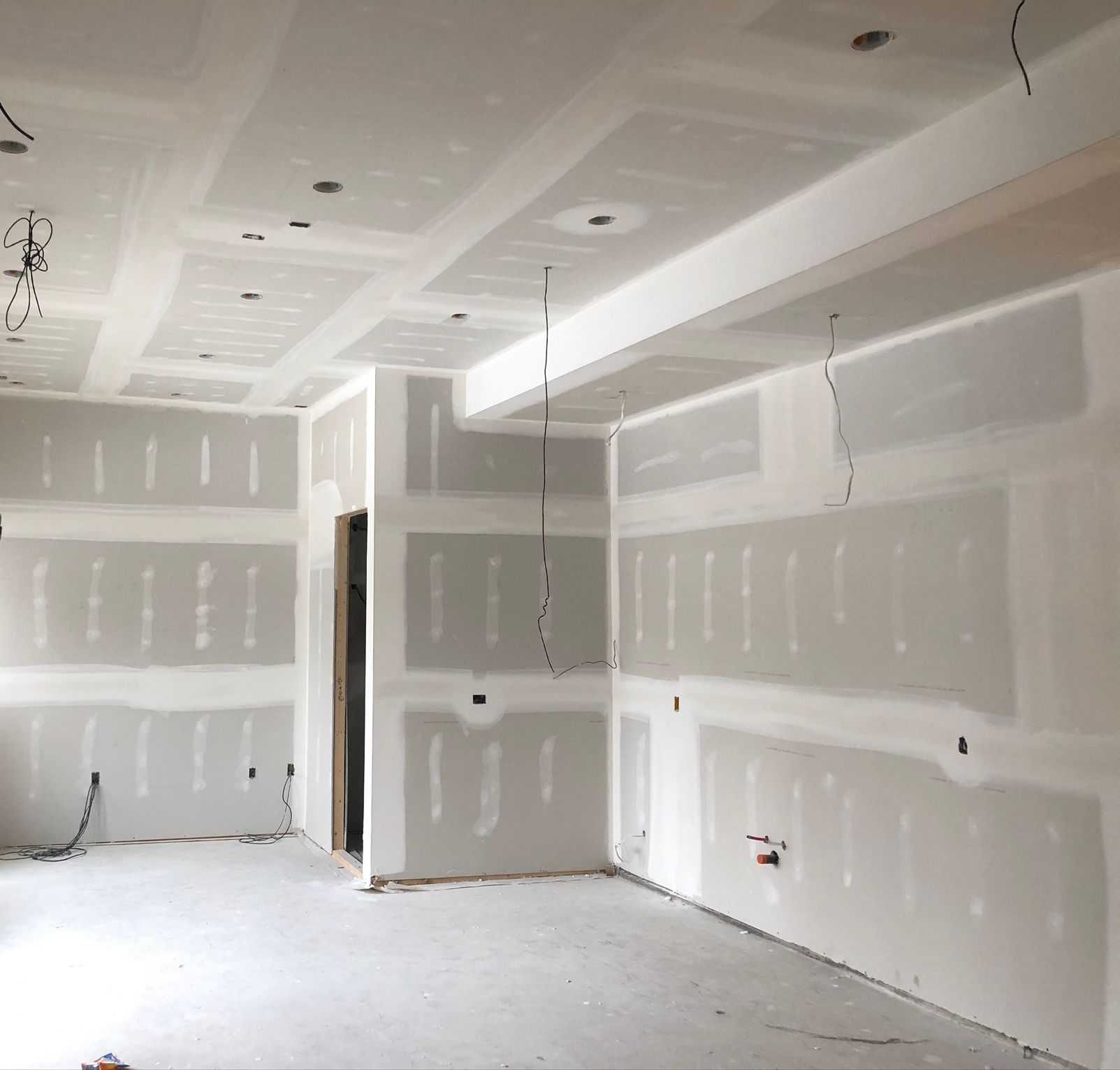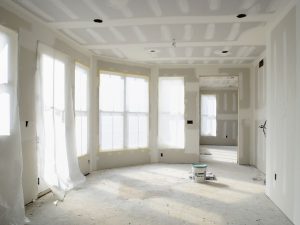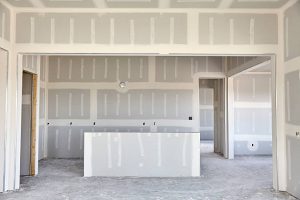Maintaining the pristine appearance of your home involves addressing even the smallest drywall imperfections promptly. Small-scale damages, though seemingly minor, can accumulate and diminish the overall aesthetic appeal of your living spaces. In this extensive guide, we will delve into the world of small-scale drywall repairs, with a particular focus on the professional touch. Discover how seasoned experts approach these repairs with efficiency and precision, delivering flawless results that stand the test of time.
1. The Importance of Hiring a Professional
1.1. Expertise and Efficiency:
One of the primary reasons homeowners opt for professional drywall repair services is the level of expertise these professionals bring to the table. Years of experience allow them to quickly assess the situation, diagnose the issue accurately, and devise an effective plan for resolution. We’ll explore the nuances of their expertise, showcasing how it contributes to efficient repairs that save homeowners both time and frustration.
1.2. Time-Saving Considerations:
Time is a precious commodity, and professionals understand the importance of completing repairs in a timely manner. We’ll delve into how their streamlined processes and efficient use of tools enable them to deliver prompt results without compromising quality. Understanding the time-saving considerations of professionals can shed light on the benefits of entrusting small-scale drywall repairs to seasoned experts.
1.3. High-Quality Finish:
Beyond expertise and efficiency, professionals provide a level of craftsmanship that results in a high-quality finish. From surface preparation to the final paint coat, we’ll explore how professionals prioritize the details, ensuring that repairs seamlessly integrate with the existing wall structure. Understanding the commitment to a high-quality finish underscores the long-term value that comes with hiring a professional for small-scale drywall repairs.
2. Assessment and Diagnosis
2.1. Systematic Approach:
Professionals employ a systematic approach to assessing and diagnosing small-scale drywall damages. We’ll outline the steps they take, from a visual inspection to using specialized tools for a more in-depth analysis. Understanding their systematic approach empowers homeowners to identify potential issues early on and addresses them proactively.
2.2. Hidden Structural Problems:
One of the advantages of professional assessments is their ability to uncover hidden structural problems that may contribute to recurring drywall issues. We’ll explore the techniques professionals use to identify these underlying concerns, emphasizing the importance of addressing both surface-level damages and potential structural issues for a comprehensive repair.
2.3. Thorough Diagnosis:
Professionals go beyond surface-level observations, conducting a thorough diagnosis to understand the root cause of the drywall damages. From moisture issues to settling problems, we’ll delve into the various factors professionals consider during their assessment. Understanding the depth of their diagnosis process is key to implementing effective and lasting solutions.
3. Specialized Tools and Materials
3.1. Advanced Joint Compounds:
Professionals have access to advanced joint compounds that go beyond the capabilities of standard DIY products. We’ll explore the features and benefits of these compounds, from quick-drying formulas to enhanced adhesion properties. Understanding the nuances of advanced joint compounds sheds light on the professional’s ability to achieve seamless repairs.
3.2. Specialized Sanding Equipment:
Sanding is a crucial step in the drywall repair process, and professionals use specialized equipment to achieve a perfectly smooth surface. We’ll discuss the types of sanding tools professionals use, from powered sanders to hand sanding techniques. Understanding the role of specialized sanding equipment provides insights into achieving a flawless finish.
3.3. Precision Tools for Application:
From putty knives to taping tools, professionals use precision instruments for joint compound application. We’ll explore the different types of tools, their specific functions, and how their use contributes to achieving a professional-looking repair. Understanding the role of precision tools in application is essential for DIY enthusiasts looking to elevate their own repair skills.
4. Advanced Techniques for Surface Preparation
4.1. Cleaning and Smoothing Techniques:
Surface preparation is a cornerstone of professional small-scale drywall repairs. We’ll delve into the cleaning and smoothing techniques professionals use to ensure the damaged area is ready for repair. From removing loose debris to smoothing out rough surfaces, understanding their meticulous approach to preparation is crucial for achieving lasting results.
4.2. Priming for Enhanced Adhesion:
Professionals prioritize priming before any repair work begins. We’ll explore the importance of priming in enhancing adhesion and creating a solid foundation for joint compound application. Understanding the role of priming in the repair process sheds light on its impact on the longevity and quality of the final result.
4.3. Feathering Edges for Seamless Integration:
Feathering edges is a technique professionals use to seamlessly integrate the repaired area with the existing wall. We’ll discuss the methods employed, the importance of feathering for achieving a natural look, and common pitfalls to avoid. Understanding how professionals feather edges provides valuable insights for DIY enthusiasts striving for a professional finish.
5. Seamless Joint Compound Application
5.1. Layering Techniques:
Achieving a flawless repair involves layering joint compound with precision. We’ll explore the layering techniques professionals employ, from the initial application to subsequent coats. Understanding the intricacies of layering is essential for achieving a smooth and even finish that seamlessly blends with the surrounding wall.
5.2. Meticulous Attention to Detail:
Professionals pay meticulous attention to detail during joint compound application. We’ll discuss the specific areas they focus on, including corners, seams, and edges. Understanding how professionals navigate these details ensures that DIY enthusiasts can replicate their level of precision for a polished and professional-looking repair.
5.3. Navigating Challenges:
Small-scale drywall repairs may present challenges such as different textures or irregularities in the wall. We’ll explore how professionals navigate these challenges, offering solutions for achieving a seamless finish even in less-than-ideal conditions. Understanding their problem-solving approach equips DIY enthusiasts with the knowledge to address unexpected issues during their own repairs.
6. Expert Sanding and Smoothing
6.1. Selecting the Right Sandpaper Grit:
Sanding is an art, and professionals carefully select the right sandpaper grit for each stage of the repair. We’ll discuss the types of sandpaper used, their specific applications, and how the choice of grit contributes to achieving a perfectly smooth surface. Understanding the nuances of sandpaper selection is crucial for DIY enthusiasts seeking professional results.
6.2. Precision Sanding Techniques:
Professionals use precision sanding techniques to refine the repaired area. We’ll explore the methods they employ, including both hand sanding and powered sanders. Understanding how professionals achieve precision in sanding provides insights into achieving a smooth and seamless surface during the DIY repair process.
6.3. Feathering for Seamless Transitions:
Feathering extends beyond the surface preparation stage and continues into sanding. We’ll discuss how professionals feather edges during sanding to create seamless transitions between the repaired area and the existing wall. Understanding the role of feathering in sanding contributes to achieving a final result that is virtually indistinguishable from the surrounding wall.
7. Finishing Touches: Priming and Painting
7.1. Importance of Priming:
Priming is a critical step before applying the final paint coat. We’ll explore the importance of priming, including its role in enhancing adhesion, sealing the repair, and creating a consistent surface for painting. Understanding the significance of priming ensures that DIY enthusiasts prioritize this crucial step for a durable and aesthetically pleasing finish.
7.2. Color Matching and Paint Selection:
Achieving a seamless integration involves careful color matching and paint selection. We’ll discuss the techniques professionals use to match colors accurately and choose the right paint finish for a flawless result. Understanding the intricacies of color matching and paint selection is essential for achieving a final result that seamlessly blends with the existing wall.
7.3. Professional Paint Application:
Professionals approach paint application with precision, ensuring an even and consistent finish. We’ll explore their techniques, including brush and roller application, as well as strategies for avoiding common paint-related issues. Understanding how professionals apply paint provides DIY enthusiasts with the knowledge to achieve a professional-looking finish during their own small-scale drywall repairs.
8. Tips and Tricks for a Perfect Finish
8.1. Proper Drying Times:
One of the professional secrets to a perfect finish is adhering to proper drying times. We’ll discuss how professionals manage drying times between coats of joint compound, primer, and paint. Understanding the importance of patience in the drying process ensures that DIY enthusiasts achieve optimal results.
8.2. Addressing Common Challenges:
Professionals encounter and overcome common challenges during small-scale drywall repairs. We’ll explore these challenges, including different wall textures, irregularities, and unexpected issues, offering solutions and tips for navigating them effectively. Understanding how professionals address challenges equips DIY enthusiasts with the knowledge to tackle their own repairs confidently.
8.3. Maintaining Consistency:
Consistency is key to a flawless finish, and professionals maintain it throughout each stage of the repair process. We’ll discuss the techniques they use to ensure consistency in joint compound application, sanding, priming, and painting. Understanding the importance of maintaining consistency empowers DIY enthusiasts to achieve a cohesive and professional-looking result.
In the realm of small-scale drywall repairs, professionals bring a level of expertise, precision, and efficiency that sets their work apart. By understanding their systematic approach, specialized tools, and advanced techniques, homeowners can gain valuable insights into achieving flawless results for their homes. Elevate your drywall repair experience with the expert touch of professionals, ensuring a lasting and aesthetically pleasing outcome that stands as a testament to the artistry of their craft. With the knowledge acquired from this comprehensive guide, DIY enthusiasts can confidently embark on their small-scale drywall repairs, armed with the techniques and secrets employed by seasoned professionals.






